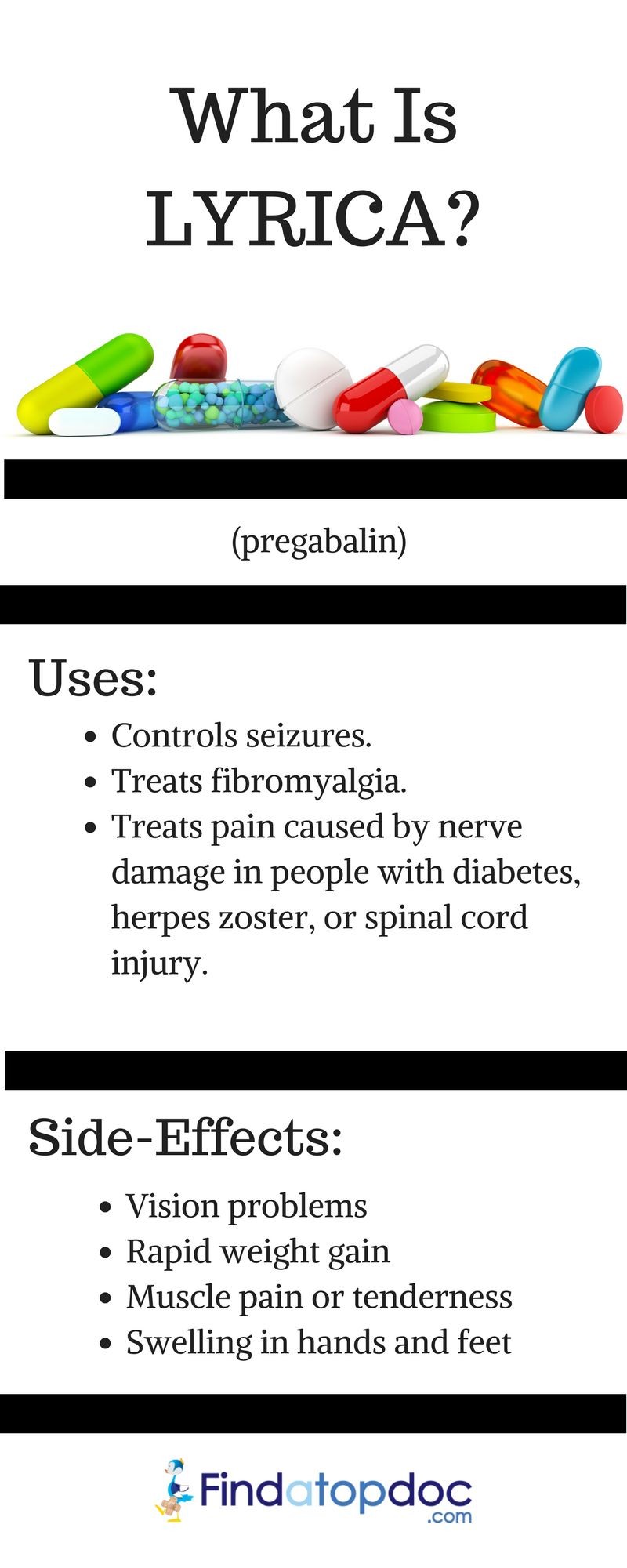
Contents
Lyrica (pregabalin) vs. Savella (milnacipran)
Lyrica (pregabalin) is an oral medication related to gabapentin (Gralise, Neurontin) used to treat pain from neurologic diseases like postherpetic neuralgia and seizures. It also treats fibromyalgia.
Savella (milnacipran) is a selective serotonin and norepinephrine reuptake inhibitor (SNRI) used to treat fibromyalgia pain. It is similar to duloxetine (Cymbalta), venlafaxine (Effexor), and desvenlafaxine (Pristiq). Milnacipran affects neurotransmitters, the chemicals that nerves use to communicate.
QUESTION
What are the side effects of Lyrica and Savella?
Lyrica
WARNING
- Antiepileptic medications have been associated with increased risk of suicidal thinking and behavior. Anyone considering the use of antiepileptic drugs must balance this risk of suicide with the clinical need. Patients who start therapy should be closely observed for clinical worsening, suicidal thoughts, or unusual changes in behavior.
The most common side effects of Lyrica are
- dizziness,
- drowsiness,
- dry mouth,
- edema (fluid accumulation),
- blurred vision,
- double vision,
- weight gain,
- fatigue,
- abnormal gait,
- tremor,
- difficulty concentrating.
Other side effects include
- constipation,
- increased appetite,
- nausea,
- flatulence,
- amnesia,
- disorientation,
- myoclonus,
- heart failure,
- low blood pressure,
- vomiting,
- reduced blood platelet counts,
- increased blood creatinine kinase levels.
Increased creatinine kinase can indicate muscle injury, and in trials, three patients experienced severe muscle injury called rhabdomyolysis. Patients should report unexplained muscle pain, tenderness, weakness, especially with fever and malaise. Lyrica has rarely been associated with angioedema (swelling of the face, tongue, lips, gums, throat, and larynx).
Savella
The most frequent side effects include:
- nausea,
- headache,
- constipation,
- dizziness,
- insomnia,
- flushing,
- excessive sweating,
- vomiting,
- palpitations,
- increased heart rate,
- dry mouth,
- high blood pressure.
Other side effects include:
- seizures,
- hypertensive crisis,
- abnormal bleeding,
- low blood sodium,
- withdrawal syndrome.
Antidepressants may increase the risk of suicidal thinking and behavior in children and adolescents with depression. Patients who start milnacipran or another antidepressant should be observed closely for clinical worsening, suicidal thinking and behavior, or unusual behavior.
What is the dosage of Lyrica vs. Savella?
Lyrica
- Lyrica may be taken with or without food.
- Treating diabetic peripheral neuropathy: The initial dose for neuropathic pain from diabetic peripheral neuropathy is 50 mg three times a day (150 mg/day). The dose may be increased to a maximum of 100 mg three times daily (300 mg/day) after one week.
- Treating postherpetic neuralgia: The recommended dose for postherpetic neuralgia is 75-150 mg twice daily or 50-100 mg three times daily. Dosing should begin at 75 mg twice a day or 50 mg three times a day (150 mg/day). The dose may be increased to 100 mg three times daily (300 mg/day) after one week. If pain relief is inadequate after 2-4 weeks of treatment at 300 mg/day, the dose may be increased to 300 mg twice a day or 200 mg three times daily. Doses greater than 300 mg cause more side effects.
- Treating neuropathic pain from spinal cord injury: The dose for treating neuropathic pain from spinal cord injury is 150 to 600 mg daily. Begin dosing at 75 mg twice a day and increase to 150 mg twice daily after one week if response is inadequate. May increase to 300 mg twice a day if response is inadequate after 2 to 3 weeks.
- Treating seizures: The recommended dose for treating seizures is 150-600 mg/day divided into 2 or 3 doses, starting at 150 mg daily and increasing based on response and tolerability. The maximum dose is 600 mg/day.
- Treating fibromyalgia: Fibromyalgia is treated with 300-450 mg/day in 2 or 3 divided doses.
Savella
The recommended starting dose is 12.5 mg once a day, then 12.5 mg every 12 hours for days 2 and 3, then 25 mg every 12 hours for days 4 to 7, then 100 mg twice a day thereafter.
- The maximum dose is 200 mg per day.
- It may be administered with or without food, but food improves tolerance.
- This drug has not been studied in children (under 18 years old).
What drugs interact with Lyrica and Savella?
Lyrica
- Alcohol and sedating drugs may increase pregabalin’s sedative effects.
- Pioglitazone (Actos) and rosiglitazone (Avandia) cause weight gain, fluid retention, and possibly heart failure. Combining pregabalin with these drugs may increase the occurrence of weight gain and fluid retention.
Savella
Milnacipran should not be used with a monoamine oxidase inhibitor (MAOI) such as phenelzine (Nardil), tranylcypromine (Parnate), isocarboxazid (Marplan), selegiline (Eldepryl), or within 14 days of discontinuing the MAOI. Allow at least 5 days after stopping milnacipran before starting an MAOI. Combining SNRIs and MAOIs may lead to serious, sometimes fatal, reactions including very high body temperature, rigidity, rapid fluctuations of heart rate and blood pressure, extreme agitation progressing to delirium and coma. Similar reactions may occur if milnacipran is combined with antipsychotics, tricyclic antidepressants, or other drugs that affect serotonin in the brain (for example, tryptophan and sumatriptan [Imitrex]).
Combining milnacipran with epinephrine or norepinephrine may lead to high blood pressure and abnormal heart beats because milnacipran increases epinephrine and norepinephrine.
Combining milnacipran with aspirin, nonsteroidal anti-inflammatory drugs (NSAIDs), warfarin (Coumadin), or other drugs associated with bleeding may increase the risk of bleeding because milnacipran is associated with bleeding.
By clicking Submit, I agree to the MedicineNet’s Terms & Conditions & Privacy Policy and understand that I may opt out of MedicineNet’s subscriptions at any time.
Can you use Lyrica and Savella while pregnant or breastfeeding?
Lyrica
- There are no adequate studies of Lyrica in pregnant women.
- It is not known whether Lyrica is excreted in breast milk.
Savella
Milnacipran is excreted in human breast milk. The effect of milnacipran on nursing infants is unknown. Breastfeeding should probably be avoided while taking milnacipran.
From
Healthy Resources
Featured Centers
- What Are the Best PsA Treatments for You?
- Understanding Biologics
- 10 Things People With Depression Wish You Knew
Summary
Lyrica (pregabalin) and Savella (milnacipran) treat fibromyalgia pain. Lyrica is also used for neuropathic pain from diabetic peripheral neuropathy or postherpetic neuralgia, and in combination with other drugs for partial onset seizures in adults. Lyrica and Savella are different drug classes. Lyrica is an anti-epileptic drug (AED) and Savella is an SNRI antidepressant.


